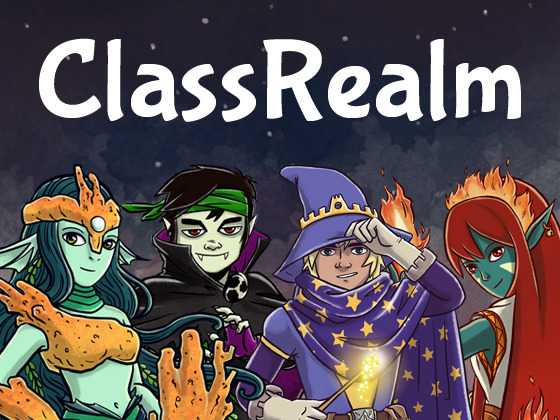Category Archives: Uncategorized
Managing Content in Education (and anywhere else)
In the cube next to you, you hear, “Aw man, which version of the company logo is official?”
or
“Why do we have 18 versions of Maslow’s Hierarchy of Needs that our own graphic artists produced for separate courses?”
Then someone says, “Hey, wouldn’t it be great to share all this content? You know, like, pick the best and share it? We’d save so much time!”
Maybe. It depends. You might not. You must design the order to get the order. It doesn’t happen on its own. Throwing books, images, pamphlets, and PowerPoints into a dumpster of a shared drive is easy. Building a library that expedites user search is not. The steps you need to take to order/catalogue/rate digital data is EXACTLY the same as print data. Only the medium is different. And computers can do whatever you can tell them to do faster than a person. So, they do both dumb and smart things very fast. Humans define best, not computers. Well…computers (AI, Gen AI, ChatGPT etc.) will if you let them.
Also, there may be order that is just not apparent to people outside a team, unit, department. Don’t throw the baby out with the bathwater just so you have something to talk about at the next Dean’s conference.
Can AI help organize 1 million files that go back 13 years?
Definitely. Well hold on…do you care about meaning and usefulness and not creating a minefield of errors your users will have to discover in the middle of a PMP’s critical path on WBS? Ok, walking back definitely–Probably it can help, if you know how to write prompts, have either a method to spot check that is statistically sound to root out find hallucinations OR have emply an AI that includes citation so a person can ‘keep the first AI honest”, or finally, have another AI to check the first somehow. We’re definitely getting there. But AI is not the answer if you don’t know what the ‘manual’ methods for ordering content are.
Keywords for search
How deep is your search? File titles or a ‘deep’ look into all the content of the file. Say you have 10,000 MS Office files. Does your search only look at the file titles? Titles and medata? Or does it read the file itself? I like deep search because I don’t trust assigned keywords, especially if this was crowdsourced. If a librarian with a MS in Library Science did the keywords, I’d feel better about file title and metadata only search.
Folders with useful names for searching in
Kind of the same as keywords, but you can only put something in one folder. Or, you have the slightly more confusing possibility of having the same file in multiple folders. Or, you have keywords and also put things into a folder for the primary knowledge domain of this. It’s like the card catalog system where there was a title card and a subject card for same book. I think. It was 1993 last time I used a card catalog.
Pattern Library, an .html standard for looks and function
Is 508 important? Yes, in general. Is it important for your organization? Are you going to conform? You might do a risk assessment or cost/benefit analysis before you start down that path; it’s a long path if you have a lot of stuff to make accessible. It’s a serious task that involves reading comprehension and writing at the SME level, and likely some graphics/imagery skill. You can fool an accessibility checker into reporting compliance while alienating your vision impaired users because you didn’t actually make the information accessible.
[insert example of compliant but not accessible here; (if i don’t this is ironic example of bad alt text)]
And some user groups will just never need it. You make training for firefighters? They can all see and hear; they’re not using screen readers. Bona fide job qualifications can narrow your audience. But talk to an attorney, not me.
Do you have page or resource tracking on? Web analytics? Does anyone EVER actually use the thing you’re about to make accessible? If no one uses it, don’t waste your time.
But if you know the content will be used, pick a standard like WCAG 2.2, get a pattern library and enforce its use. You’ll save time in the long run. BTW, the bracketed placeholder above is analogous to bad alt text. You, the user, knows something better should be there, you just can’t access it because of the way I built this page. I might come back to this and fix it.
SCORM, Tin Can — kinda related
Next cubicle says, “Hey, let’s bundle features and get an interoperability standard for learning objects, or an API, that reports test scores and bookmarks with a taxonomy of content! Then education will be like legos!” That was SCORM, which is still useful to a point.
Trying to get from SCORM 1.3 and 2004 to the next level broke their brains. It was too hard to get to the next step; which was adding in taxonomy of content. Tin Can didn’t do it either, it’s just a more robust standard as eLearning moves beyond desktop PCs to mobile. Let’s boil it down. Education/training is, writ large, at scale, every idea anyone ever had worth passing on. Oh wait, you can’t boil it down because you’re trying to boil the sea. I mean, humanity COULD do it if we had a committee big enough. Or small enough? And was Wittgenstein was joking when he wrote Tractatus Logico-Philosophicus? He was trying to document how everything one could say meaningfully and it didn’t really work for me.
Currently, you still need SMEs working with instructional designers OR experienced instructors to pick/write the content, sequence it and create the assessments. Or you buy a curriculum where someone else did all that stuff.
Can AI do this now? Maybe, some of the time, but how do you know? What’s your safety net if it goes off the rails and you don’t have the SMEs and instructional systems experts to tell you it has? Maybe hire some human experts. Or maybe you just have a folder labeled Style Guide and put old stuff in a folder called Style Guide (old, don’t use).
Quick and easy DIY ROI
Looking to justify a move to eLearning? Need a way to trim the training budget? These simple in-browser ROI calculators will ask you the questions you might not think to ask yourself if you don’t normally deal with budgets.
Cognitive Development of Twentysomethings
I remember being told as an undergraduate student by Prof Peter Metcalf that one’s choice of major didn’t really matter and that we could reassure our parents that there would be plenty of middle-management positions waiting for us down the road. Many, if not most, people do not work in the same field as what they studied as an undergrad, he said. I was thus reassured with my choice to give up engineering in favor of cultural anthropology. I’m sure he was right about the second part. I’m still waiting to see about the first.
On another occasion, my advisor, Prof Adria LaViollete, seeing that I wanted to pile on more courses within my major, said that specialization should be saved for grad school. Undergrad was the time for exploration, not specialization. (I ignored her advice and now regret it.) Either way, grad school can come years after the bachelors degree and subsequent formative work experiences. I did take that advice. I’ll never really know if I could have made better decision, but a recent NIH study suggests that a final period of brain development is occurring in people’s twenties. This is worth considering in an era where 1) young people are pushed to make decisions about how they will earn a living and 2) most people will have multiple careers in different fields because of a more dynamic/chaotic job market.
ClassRealm
Classrealm is an idea for a learning management system (LMS) unlike any I have seen. It’s a struggling idea (failed its kickstart fundraiser), but worth thinking about. The LMS itself will be nothing new. But layered over the LMS nuts and bolts will be a Tolkienesque fantasy world. Students have a hero persona that advances a la video game style as the student completes assignments. The fantasy component is meant to motivate students to learn the standard state/local curriculum. Gamification, as Classrealm’s creator suggests, is a way to motivate students to complete otherwise unappealing tasks.
My take is that Classrealm is more of a different way of grading than a different way of learning. Instead of a grade point average, you have a hero persona with health a la a video game. Assignments are linked to quests and so on. My first impression is that Classrealm will only function as a crutch to help a curriculum that students do not find interesting. Nevertheless, it may very well find success in reaching students who would otherwise fall behind their classmates.
I see great potential in using games for learning and development in every part of society, but they have to be designed from the ground up. I think that the real sea change in using games to teach will occur when professional game designers with a serious budget (think Sony or Nintendo) are presented with the task of creating games to teach the content.
Sept 30 update: I started a Gamification course created by Keven Werbach at UPenn delivered through Coursera. Apparently, the field is moving more quickly than I thought. I found two up and running gamification services: Bunchball and Chore Wars, but there are more out there. Very similar to ClassRealm, both reward users for tasks completed outside the game. Chorewars is free/cheap and aimed at home users or cubicle workers who are tired of cleaning up others’ break room messes while Bunchball looks like a more serious business venture for more serious subscription rates. Personally, I would like to see some webisodes of a show about heavy users of Chore Wars in the same vein of humor as The Guild or The Office.
Simulated Field Experiences with Gigapan
Getting out of the classroom is almost always a relief for students. I always loved field trips with students but the administrative burden to set up trips was high and the legal liability of leaving school grounds with students was worrisome. Those practical considerations aside, just about any contemporary theory of learning and development suggests that field experiences should happen often. I not regret a single trip, as they all provided memorable, fun learning experiences. So, can an enormous image feel like a trip outside? Maybe!
Gigapan allows users to upload and view very large pictures. The images are so large, they allow the viewer to “travel” through the image using zoom and pan. A good gigapan is so detail rich, one image alone could be the topic of a lecture or an assignment. A teacher can use the image on a big screen to support a lecture or class discussion. The images could also be used as a source material for an assignment requiring individuals or small groups to explore the images, both at a wide-angle view and in close detail.
Special cameras are used to capture many of the following images, but you may be surprised by the resolution of some older technologies. Be sure to use the zoom feature and wait for the image to clarify if you have a slower connection.
- Here is a potential simulated geology trip: http://www.gigapan.com/gigapans/97851
- Find people and buildings around London http://www.360cities.net/london-photo-en.html
- And for historical look at evolution of tech, it took more than a decade for digital film pixel density to catch up to older analog film tech: View of historic Cincinnati! Find the tiny people! http://www.rochester.edu/news/photos/daguerreotype.html
Learning Moodle

I have known about Moodle for a few years, but I have not fully explored its capabilities. To familiarize myself, my plan is to create a simple course using Moodle, about Moodle. I will update my progress as interesting things happen. I am hoping to complete in less than a week.
So far, I have found a slideshow that uses a Lego blocks as a metaphor to explain the modular nature of Moodle. This model provides both a structure for this mock course as well as content, so I will speak to this model as I make progress. According to this model, any Moodle course will include four elements:
- information storage
- communication among classmates
- evaluation of self and others
- collaboration on projects and problems
These four provide an easy-to-understand yet powerful model of what should be in a course. If the designer can meet the requirements of all four components, a robust learning environment is probably being created.
3/28 update: The course outline is up. Some of the supporting activites need to be completed, but essentially, I have met my goal of publishing a Moodle course to the Web. This was easier than I thought it would be. If you are familiar with any LMS or CMS, you should be able to navigate the design interface pretty quickly. I would think that any course with a solid set of supporting materials in digital formats could quickly be uploaded to create a good hybrid or e-learning course.
7/31 update: I just completed a contract to create a course in Moodle! My task was to convert a three-hour-long narrated slideshow into an online DIY course using Moodle. I decided to break the slideshow up into 7 sections and create a module to go along with each section. Within each section, I created supporting documents, quizzes, and forums. Unfortunately, the structure of the content is all proprietary, so I can’t share it. I did it all in about 35 hours (with breaks, of course!).
Flipping the Classroom
The “flip” refers to where students first see the content and where they try to apply what they have learned. The traditional model has lecture in class and assignments done primarily outside of class. Homework and assignments are typically done in isolation from the teacher and other students. Any problems had to be solved (or skipped) by the student until the next class. In a flipped classroom, the polished lectures or videos are available online for students to view at home. In class, students apply what they learned outside of class in groups with the teacher available to help.
Two years ago I reviewed Rethinking Education in the Age of Technology by Allan Collins and Richard Halverson in another blog*. The concept of flipping reminded me of one of the authors’ points: technology can efficiently deliver polished lectures/readings/videos to students. When teachers are relieved of this task, they can concentrate on helping individual students or small groups. For a teacher seeing 150 students a day, this is an invaluable efficiency. Flipping the classroom promises exactly this. Students watch lecture or read a chapter outside class via the school’s learning management system, then apply it inside class where the teacher’s expertise or elements such as a laboratory are immediately available.
I am certain that there are teachers who have been doing this for a while. Flipping is not a new concept, but it is reinforced by the affordances of the Internet and the increasing access students have to streaming content.
*update: my old company “rebooted” the blog. i will try to find a copy and post it.



